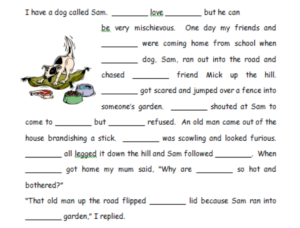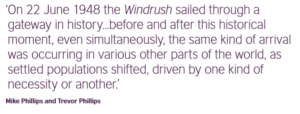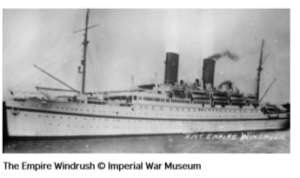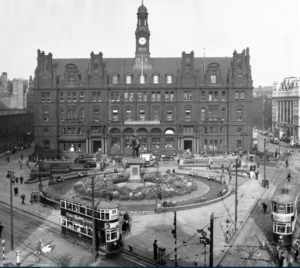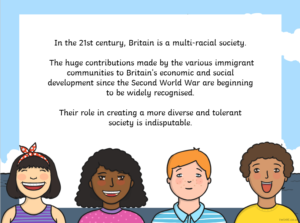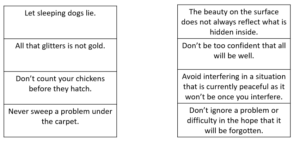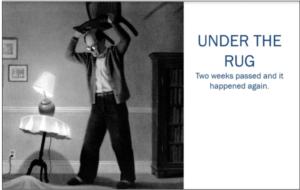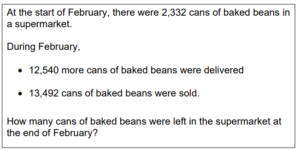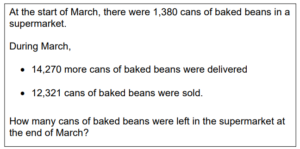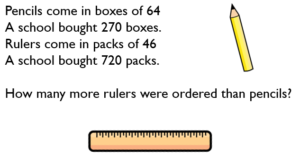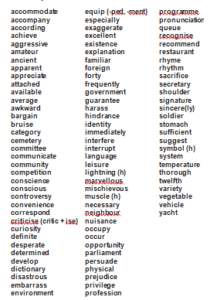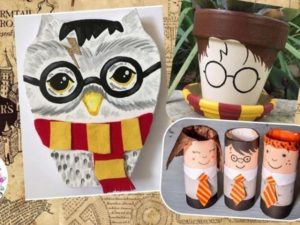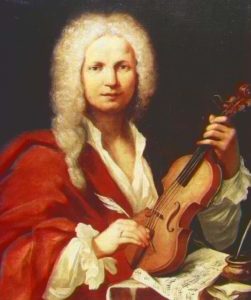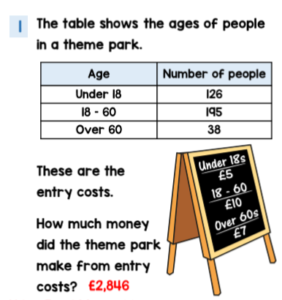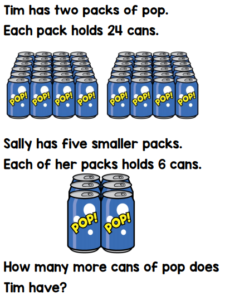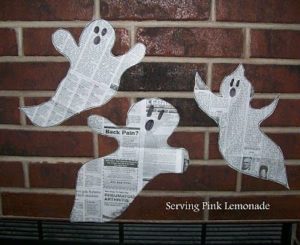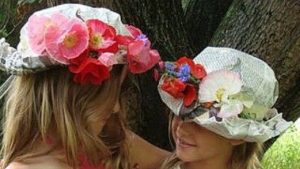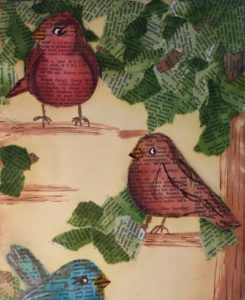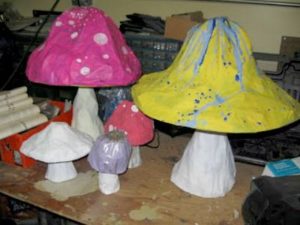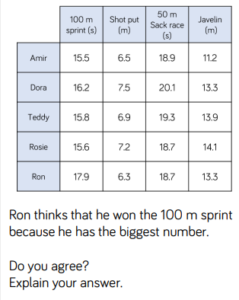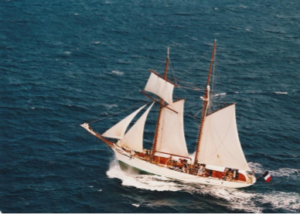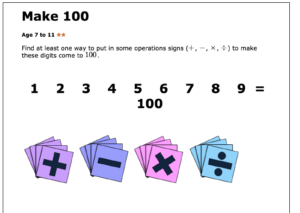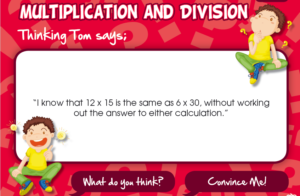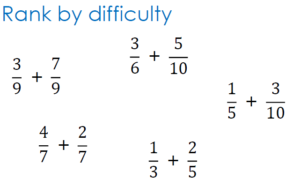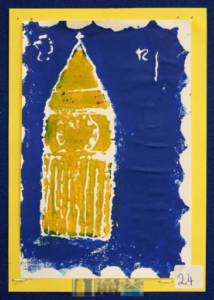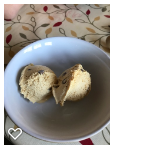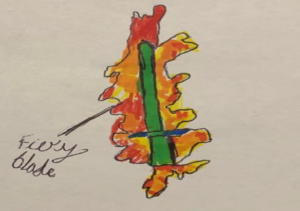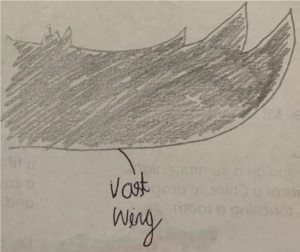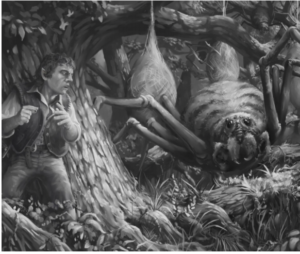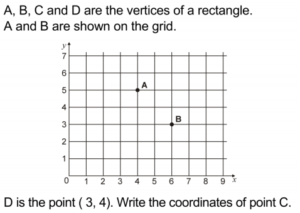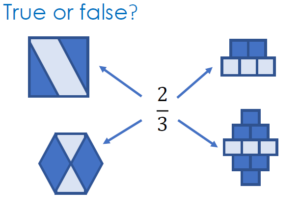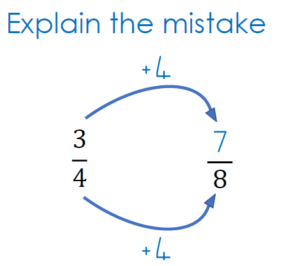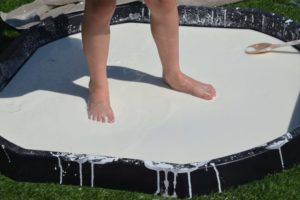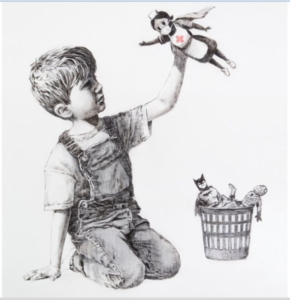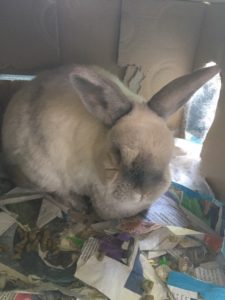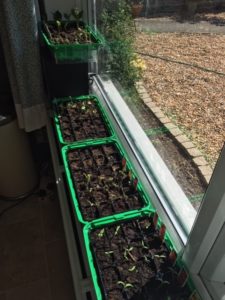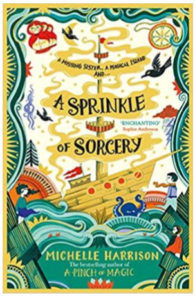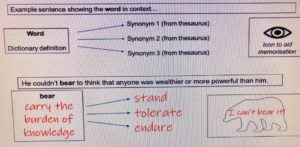Home Learning Week Beginning 19th June, 2020
Hello Year 5,
It’s been lovely to catch up with most of you and find out what you have been up to. It’s been very odd teaching again but without our Year 5 classes. We have been teaching different year groups, who have been lovely, but we still miss seeing your smiley faces and listening to your stories.
This half term we would have been studying ‘coasts’ as our topic. If any of you do manage to get to the beach, have a look for signs or erosion around the area. What defences have been put in place to stop the erosion of the beach – groynes, sea walls, gabions/ rock armour or a mixture of defences? If you can see a headland jutting into the sea, are there caves formed; any arches, stacks or stumps? Has a bay been created?
Don’t forget to email through your one favourite piece of work so that we can see all of the great learning you have done.
This week’s tasks are as follows:
Reading and Writing:
For your English work this week you will once again be using the Oaks National Academy website. The focus is on persuasive writing so try and think back to all of the great persuasive skills you learned in Year 5 when you wrote your own persuasive speeches on your favourite superhero and when you tried to persuade tourists to visit Pandora. Good luck!
Reading
Please continue to ensure that you are reading an age appropriate book for at least 20 minutes each day. It is so important to help you build your vocabulary and develop your fluency and stamina!
Lesson 1: To infer from the text
https://classroom.thenational.academy/lessons/persuasive-letter-reading-comprehension-inference
Lesson 2: Reading comprehension – to clarify word meaning
https://classroom.thenational.academy/lessons/persuasive-letter-reading-comprehension-word-meaning
Writing
Lesson 3: To identify the features of a text
https://classroom.thenational.academy/lessons/persuasive-letter-identifying-the-features-of-a-text
Lesson 4: Grammar focus – using a list of 3 in a sentence.
https://classroom.thenational.academy/lessons/persuasive-letter-spag-focus-list-of-three
Lesson 5: Writing a persuasive letter.
https://classroom.thenational.academy/lessons/persuasive-letter-write-a-persuasive-letter
Extra challenge:
Plan a broadcast
Imagine that you have the chance to set up a new club for children. This could be a ‘lockdown’ club or a club that could take place when we all return to school. A local radio show has given you 3 minutes to persuade your audience that the club is a good idea.
Plan the content of your broadcast. Make sure you give some good reasons why the club should be set up, a range of persuasive language and strong conjunctions and connectives to link your points together.
Rehearse the broadcast. Think carefully about the expression in your voice, the speed at which you present and maintain good eye contact with your audience.
Please feel free to email your persuasive recordings to our class email page.
Maths:
Task 1: 20 minutes of times tables work every day. Use TT Rockstars to help you practise.
Task 2: Arithmetic task and times tables task on Sumdog.
Task 3: There are 2 activities set on My Maths to complete. Use your login details to get onto the website.
Task 4:
Taken from Oak National Academy
Lesson 1 – watch the video and complete tasks given within it
https://classroom.thenational.academy/lessons/to-solve-problems-related-to-decimals/activities/2
Complete the activities based on the lesson
https://classroom.thenational.academy/lessons/to-solve-problems-related-to-decimals/activities/3
Lesson 2 – complete the quiz from the previous lesson
https://classroom.thenational.academy/lessons/to-investigate-multiplying-decimals/activities/1
Watch the video and complete tasks given within it
https://classroom.thenational.academy/lessons/to-investigate-multiplying-decimals/activities/2
Complete the activities based on the lesson
https://classroom.thenational.academy/lessons/to-investigate-multiplying-decimals/activities/3
Lesson 3 – complete the quiz from the previous lesson
https://classroom.thenational.academy/lessons/to-multiply-decimals-by-whole-numbers/activities/1
Watch the video and complete tasks given within it
https://classroom.thenational.academy/lessons/to-multiply-decimals-by-whole-numbers/activities/2
Complete the activities based on the lesson
https://classroom.thenational.academy/lessons/to-multiply-decimals-by-whole-numbers/activities/3
Lesson 4 – complete the quiz from the previous lesson
Watch the video and complete tasks given within it
Complete the activities based on the lesson
Task 5:
Taken from HIAS problem solving:
Challenges:
From White Rose Y5 Maths:
Spellings and Grammar:
Task 1: Spelling task on Sumdog.
Task 2: Grammar task on Sumdog.
Task 3:
To practise using pronouns correctly.
What is a pronoun?
Can you think of some examples?
What is the difference between singular and plural pronouns?
Continue to learn the spellings on the Year 5/6 Spelling List – do a few at a time.
Family Science Activity
Balloon Car Racers
https://www.rigb.org/families/experimental/balloon-car-racers – to watch the video
The activity – Make cars which are propelled by balloon power.
ExpeRiment with designs and see what factors affect how fast or how far your car goes.
Learn how a balloon car works just like a rocket.
https://www.rigb.org/docs/ballooncarracers_infosheet_1_1.pdf – to view the information sheet
What to do:
- Make a balloon car based on the instructions Mark gives in the video.
- Decide how you will judge what makes a ‘good’ car – is it how far it goes or how fast it goes?
- Investigate what happens if you have bigger or smaller wheels (you can use other types of lids or make wheels from cardboard and use blu-tac or glue to attach them to the kebab skewers).
- Investigate what happens if you change the design of your car in other ways – you can watch the video again for inspiration for other designs.
Going further challenge:
- Measure how far your car travels using a tape measure.
- Time how fast your car travels ½ a metre – would double the speed be the time that your car would travel 1 metre? Test it out.
- You can find the speed of your car in metres per second using a stopclock and a tape measure: Measure the distance the car travels (in metres) then dividing that distance by the time it took to travel (in seconds).
Topic – The Windrush
Watch the BBC Newsround clip describing the arrival of the Empire Windrush.
https://www.bbc.co.uk/newsround/43793769
Background
Between 1948 and 1970 nearly half a million people left their homes in the West Indies to live in Britain. The West Indies consists of more than 20 islands in the Caribbean, including Jamaica, Barbados and Trinidad. These people changed the face of modern Britain. They were all British citizens and, although they had never lived in Britain before, they had the right to enter, work and settle here if they wanted to.
West Indians came to Britain for many different reasons. Some were seeking better opportunities for themselves and their children. Some came to work for a while, save money and return home. Some had been recruited because Britain was short of workers to run the transport system, postal service and hospitals. Other West Indians were returning soldiers who had fought for Britain during the Second World War (1939-1945).
Not all white Britons welcomed the black Britons. Many West Indians found that the colour of their skins provoked unfriendly reactions. For example, despite the desperate shortage of labour, some still found it difficult to get good jobs. Often they were forced to accept jobs which they were over-qualified for, or they were paid less than other white workers.
West Indians also experienced difficulties in finding suitable places to live. Since few had much money, they had to find cheap housing to rent near to their workplace. This was often in the poor inner cities. Even if they did have enough money to rent better quality housing, many had to face the fact that some landlords refused to rent to black people. They would be confronted with insulting signs in house windows that said ‘Rooms to Let: No dogs, no coloureds’. This meant that a lot of West Indians were forced to rent homes in the most rundown areas.
In 1958, in areas where larger numbers of West Indians lived, there were outbreaks of violence against them. In particular, in Nottingham and London mobs of white people attacked black people in the streets, smashing and burning their homes.
West Indians had been invited to come to Britain, so they also felt that it was their home too. To be discriminated against was a shock which they had not been prepared for. Some returned to the West Indies, but many remained – despite the difficulties they faced. They have worked hard and made a contribution to British life.
Jamaican village scene c.1950
A large Jamaican city c.1950
City Square, Leeds. 1949
Oxford Street, London. 1960’s
Task 1:
Imagine you are one of the passengers who came to live in Britain on the Windrush. Write a letter home to your family in the West Indies describing your arrival in Britain (expectation/ reality), how people are treating you (good / bad) and what Britain is like compared to home (use the photographs to help).
Life for Caribbean Immigrants Today
Today, their descendents and new immigrants to the country can still suffer the effects of discrimination and racism, which may not always be obvious. For example, they may find it more difficult to get jobs or receive the same standards of justice as white British people.
The Windrush Scandal
Some of the effects of racism are more obvious. Recently the British government was forced to apologise for what has been called the ‘Windrush Scandal’, in which people who have lived in Britain ever since immigrating decades ago have been wrongly arrested, denied legal rights, threatened with deportation and sometimes even wrongly deported from the UK by the Home Office.
Task 2:
Around the body outline, describe how you would feel if you have lived in Britain for decades but still did not have the same rights as every other British person and the possibility of deportation back to the West Indies.
Topic – India
L.O: To research the key features of a contrasting country.
As part of our country study we would have been researching India, ready for the carnival. Over the coming weeks we will give you areas of research for you to find details and put them together in an interesting way of your choice.
Over the next week, please continue to research these NEW areas:
The culture of India – music, dancing, art food…
The religions followed in India – different religions and the way they are followed.
Any festivals celebrated in India – some festivals may have religious links.
Websites to help:
https://www.kids-world-travel-guide.com/india-for-kids.html
https://www.bbc.co.uk/bitesize/clips/z4fr87h
https://kids.kiddle.co/Indian_religions
https://parenting.firstcry.com/articles/15-popular-festivals-of-india-interesting-facts-for-kids/
Music
Go to the website below and watch Naomi Wilkinson’s video about Grazyna Bacewicz.
https://www.bbc.co.uk/teach/ten-pieces/classical-music-grazyna-bacewicz-overture/zf2k382
|
Grażyna Bacewicz learnt the violin and the piano as a child – and, throughout her life, she enjoyed composing music for both instruments, including piano sonatas and seven violin concertos.
www.bbc.co.uk
|
Why was Grazyna Bacewicz considered a musical trail blazer?
Now listen to the whole piece in the second video. Can you hear the morse code pattern v …- for victory?
Why not try creating your own secretive rhythms
eg. This is top secret.
Don’t tell a soul.
Problems with the English webpage?
For those of you who have struggled with the first website, please try clicking on this copy of the web address:
https://mrsgraveswebsite.weebly.com/uploads/1/2/6/8/12686140/the_mysteries_of_harris_burdick.pdf
Hope this helps.
Home learning Week beginning 15th June 2020
Hello Year 5,
We hope you have had an enjoyable week. Below you will find all of your home learning activities for this week – we hope you enjoy completing them. Don’t forget to email through your favourite piece of work so that we can see all of the great learning you have done.
This week’s tasks are as follows:
The Chronicles of Harris Burdick – Reading and Writing Unit
This sequence is developed around the two texts: The Mysteries of Harris Burdick by Chris Van Allsburg and an extract from The Chronicles of Harris Burdick. Both texts are available online and can be found using the following links:
https://mrsgraveswebsite.weebly.com/uploads/1/2/6/8/12686140/the_mysteries_of_harris _burdick.pdf
Lesson 1: Response to Reading
Task 1: Explore the Mystery of Harris Burdick. Websites and PPTs are available at: https://mrsgraveswebsite.weebly.com/uploads/1/2/6/8/12686140/the_mysteries_of_harris _burdick.pdf
http://www.houghtonmifflinbooks.com/features/harrisburdick/
Task 2: Read the introduction letter (below) As you read make notes:
Is there any vocabulary you don’t understand?
Do you have any questions?
How does it make you feel?
Answer the following questions:
Q1: Who was Harris Burdick?
Q2: How many stories did he say he had written?
Q3: How does the introduction letter affect the way we read the book?
Introduction
I first saw the drawings in this book a year ago, in the house of a man named Peter Wenders. Though Mr. Wenders is retired now, he once worked for a children’s book publisher, choosing the stories and pictures that would be turned into books. Thirty years ago a man called at Peter Wenders’ office, introducing himself as Harris Burdick. Mr. Burdick explained that he had written fourteen stories and had drawn many pictures for each one. He’d brought with him just one drawing from each story, to see if Wenders liked his work. Peter Wenders was fascinated by the drawings. He told Burdick he would like to read the stories that went with them as soon as possible. The artist agreed to bring the stories the next morning. He left the fourteen drawings with Wenders. But he did not return the next day. Or the day after that. Harris Burdick was never heard from again. Over the years, Wenders tried to find out who Burdick was and what had happened to him, but he discovered nothing. To this day, Harris Burdick remains a complete mystery. His disappearance is not the only mystery left behind. What were the stories that went with these drawings? There are some clues. Burdick had written a title and caption for each picture. When I told Peter Wenders how difficult it was to look at the drawings and their captions without imagining a story, he smiled and left the room. He returned with a dust covered cardboard box. Inside were dozens of stories, all inspired by the Burdick drawings. They’d been written years ago by Wenders’ children and their friends. I spent the rest of my visit reading these stories. They were remarkable, some bizarre, some funny, some downright scary. In the hope that other children will be inspired by them, the Burdick drawings have been reproduced here for the first time.
Chris Van Allsburg
Lesson 2: Vocabulary
Proverb: a short, well-known saying, stating a general truth or piece of advice
In ‘Under the Rug’, the author uses lots of proverbs to express the advice Grandma continually gives.
Can you match the proverb with the definition?
Challenge:
Can you think of 3 more proverbs that you have come across through your own reading? If not, ask you parents to help you. When you have identified your 3 proverbs you must now write each one in the context of a sentence showing that you can use it correctly.
Lesson 3: Exploring the Writing
Read the extract from ‘Under the Rug’ by Jon Sciezka (below)
The purpose of the writing is to entertain.
What is the effect the writer creates? Do they manage to:
- develop a sequence of events?
- build tension and suspense?
- hint at the relationship between the characters?
How has the writer achieved this?
Collect examples that demonstrate how this has been achieved effectively in the text.
Extract from ‘Under the Rug’
You should always listen to your grandma. It might save a life. Grandmas say a lot of crazy things. Things like . . . Look before you leap. If the shoe fits, wear it. Sit up straight. So you never know what is really good advice and what is just crazy-talk. But grandmas know a lot. You should listen to them. I should have listened to my grandma.
It started on Wednesday, five Wednesdays ago. I know it was Wednesday because Wednesday is sweeping day. Every Wednesday we sweep the house. Grandma sweeps the kitchen. I sweep the living room. At breakfast that morning, five Wednesdays ago, Grandma told me: Hunger is the best sauce. Let sleeping dogs lie. That sweater and bow tie make you look like an old man. I was sweeping and thinking that I like my sweater, I like my bow tie. Which is probably why I forgot the other thing Grandma always says: Never sweep a problem under the rug. I finished sweeping the living room. I put away the dustpan. I was just walking into the kitchen… when I saw the dust bunny under the couch. I swept the dust bunny under the rug. And I didn’t give it another thought until the next Wednesday.
That morning Grandma said: Never say never. Don’t count your chickens before they hatch. What happened to that cake that was on the table? In the living room, I swept up a trail of cake crumbs that disappeared under the rug. I lifted up the rug. The trail led straight to a clump of hair and crumbs and dust and two glowing red eyes that looked very angry. The dust bunny had grown into a Dust Tiger! I dropped the rug. I couldn’t tell Grandma, so I put the end table over the lump in the rug.
That worked sort of okay for about a week. Then the cat food started to disappear. Something got into the garbage under the sink. I tiptoed into the living room. I peeked under the rug. I saw a huge twisted knot of hair, dirt, liver-flavoured Kibbles ‘n Bits and pieces, coffee grounds, orange peels, two chicken bone horns… and those angry red eyes staring hungrily at me. The Dust Tiger had grown into a Dust Devil!
Lesson 4: Grammar Practice and Play
I dropped the rug in a panic.
The lump I had swept under the rug heaved. The lump growled.
I knew I had to take the bull by the horns. I had to strike while the iron was
hot. I had to make hay while the sun was shining.
I dragged the bookcase over and dropped it on the bulge in the rug.
Something squeaked. Something groaned. Then it was quiet. The
bookcase leaned against the wall a bit crooked, but everything was
fine. Everything was fine.
Task 1:
Explain the author’s use of:
1: Repetition
2: Short sentences
Task 2:
Change the underlined sections so that you replace the proverbs with effective alternatives
Task 3: Challenge
Add 3 more sentences:
- Sentence 1 must start with an adverbial phrase (more information about the verb)
- Sentence 2 must contain a semi-colon
- Sentence 3 must contain only 3 words.
Lesson 5: Writing
Continue the story using the image and opening line provided by Harris Burdick.
Challenge:
Once you have completed your short story now write a second from the perspective of the ‘thing’ that was under the rug.
Extra challenge:
You are not allowed to use any word that has the letter ‘d’ in it.
Maths:
Task 1: 20 minutes of times tables work every day. Use TT Rockstars to help you practise.
Task 2: Arithmetic task and times tables task on Sumdog.
Task 3: There are 2 activities set on My Maths to complete. Use your log in details to get onto the website.
Task 4:
Taken from Oak National Academy
Lesson 1 – watch the video and complete tasks given within it
https://classroom.thenational.academy/lessons/decimals-to-represent-decimals/activities/2
Complete the activities based on the lesson
https://classroom.thenational.academy/lessons/decimals-to-represent-decimals/activities/3
Lesson 2 – watch the video and complete tasks given within it
Complete the activities based on the lesson
Lesson 3 – watch the video and complete tasks given within it
Complete the activities based on the lesson
Lesson 4 – watch the video and complete tasks given within it
https://classroom.thenational.academy/lessons/decimals-to-add-decimal-numbers/activities/2
Complete the activities based on the lesson
https://classroom.thenational.academy/lessons/decimals-to-add-decimal-numbers/activities/3
Lesson 5 – watch the video and complete tasks given within it
https://classroom.thenational.academy/lessons/decimals-to-subtract-decimal-numbers/activities/2
Complete the activities based on the lesson
https://classroom.thenational.academy/lessons/decimals-to-subtract-decimal-numbers/activities/3
Task 5:
Taken from HIAS problem solving:
Challenges:
From White Rose Y5 Maths:
From TTS:
Spellings and Grammar:
Task 1: Spelling task on Sumdog.
Task 2: Grammar task on Sumdog.
Task 3:
Write the past tense of these verbs, using –ed and generate a rule.
| Walk
Destroy Trade Hope watch
|
Carry
Listen Expect Inspire Try
|
| hop
tan knit commit hiss tug |
check
prefer grab pull thud trim |
What did you notice about the second set of words?
These verbs need to be changed into irregular past tense verbs:
| bring
think sit write eat run drink fly throw |
do
go have see steal fight light be tear |
Continue to learn the spellings on the Year 5/6 Spelling List – do a few at a time.
RE
Following the celebration of Pentecost in our Church calendar, we would like you continue to reflect upon our Mission and how we can ‘use the gifts God gave us to make our world a better place’.
Just as the Holy Spirit had appeared to the Apostles of Jesus and gave them hope while they were in Jerusalem, we would like you to consider how YOU can use the power of the Holy Spirit to support and encourage others.
Can you complete ONE of the following activities, to explore how we can continue God’s work on Earth as His followers?
– Design a logo for a charity that you feel could be made in order to support others. You can be as creative as you like! Can you include symbols of the Holy Spirit?
– Research one of the following organisations: CAFOD, Christian Aid, Missio. What is special about this charity? How do they put the needs of others first?
– Create a new school Mission Statement for St. Peters – what else can we do to help others in our community and the wider world? Which actions do you feel would be most important?
– Paint a picture of Oscar Romero. How did he follow the values set out by our school Mission Statement? Can you include key facts about his work?
– Write a letter to your local priest. Could you suggest any ways in which you could support the Church in raising money for good causes, in the future? E.g. by helping in a bake sale or coffee morning, once it is safe to do so.
Family Science Activity
Candle chemistry
**Please note that this activity must be carried out in the presence of an adult to ensure safety**
Safety advice for parents
- Do the activity on a table which is cleared of any other flammable objects or materials. Use your judgement as a parent to decide whether or not to let your child light the candles on their own.
- Make sure you’ve blown out any candles after doing the activity. Don’t move a lit candle when doing this activity. Don’t allow your child to touch the wick or candle until it has completely cooled.
- Don’t leave a lit candle unattended at any time. There’s more extensive safety advice on using candles from the UK Fire Service here: http://bit.ly/BeFireSafe
The activity
- Make a blown out candle relight as if by magic.
- ExpeRiment to find out how long a candle will burn in different amounts of air.
- Learn about the chemistry of how a candle burns.
https://www.rigb.org/families/experimental/candle-chemistry
What you will need
- At least one tea light or other small candle.
- Gas-powered cooker lighter (or long handled matches).
- Glass jars or glasses of various sizes.
- Stopwatch (maybe the one on your smartphone) or other way of measuring time.
What to do
https://www.rigb.org/docs/candlechemistry_infosheet_0_1.pdf – for information sheet about the activity.
Going Further Challenge:
Learn more facts about fire: http://bit.ly/FireFacts
Make a carbon dioxide fire extinguisher for your candles: http://bit.ly/CO2Ext
Watch a video on how candles are made: http://bit.ly/CandlesMade
Use a candle to suck water into a glass like Josh does at the end of the film: http://bit.ly/WaterCandle
Topic – India
L.O: To research the key features of a contrasting country.
As part of our country study we would have been researching India, ready for the carnival. Over the coming weeks we will give you areas of research for you to find details and put them together in an interesting way of your choice.
Over the next 2 weeks, please research these NEW areas:
The culture of India – music, dancing, art food…
The religions followed in India – different religions and the way they are followed.
Any festivals celebrated in India – some festivals may have religious links.
Websites to help:
https://www.kids-world-travel-guide.com/india-for-kids.html
https://www.bbc.co.uk/bitesize/clips/z4fr87h
https://kids.kiddle.co/Indian_religions
https://parenting.firstcry.com/articles/15-popular-festivals-of-india-interesting-facts-for-kids/
Art
Art Challenge
Key Stage Two
For your art challenge this week I would like you to do a piece of Artwork linked to a poem or book. This could be a collage picture from Owl and the Pussycat, or a STREETART word from a war poem. You may even design a new front cover for your favourite book. Let your fantastic imaginations go wild!
WOW! CHALLENGE: Read the poem or part of the book aloud to your family, using expression.
Ideas to inspire you:
However, if this doesn’t appeal to you, then you can still send any other art work to me and I will post that on the Blog too.
Please email your artwork to me:
n.pearson@stpeterswaterlooville.hants.sch.uk
Thank you
Keep creating and keep safe!
Mrs Pearson
Music
Antonio Vivaldi
Go to the website below and watch Stephanie Childress’ video about Antonio Vivaldi.
Why was Antonio considered a musical trailblazer?
Now close your eyes and listen to the whole piece on the 2nd video.
What pictures come into your head?
Find a creative way to respond to the music. This could be by dancing, drawing, painting or writing a poem. You may have your own idea.
Further challenge
Why not listen to another piece from Vivaldi’s Four Seasons- Spring, Summer or Autumn? Identify the similarities and differences to the ‘Winter’ piece. Which piece do you prefer and why?
Home learning activities for the week beginning 8th June.
Hello Year 5,
I hope you have enjoyed your first week of the remote learning for the summer term. Below you will find all of your home learning activities for this week – we hope you enjoy completing them. Don’t forget to email through your favourite piece of work so that we can see all of the great learning you have done.
This week’s tasks are as follows:
Reading:
Remember to read an age appropriate book for at least 20 minutes each day
Task 1: Write a new blurb for a book that has been read. How would you summarise it for the reader without giving too much away?
Task 2: Choose a non-fiction book of your choice and create a fact page on your chosen topic.
Writing:
This week in English we would like you to use the Oaks National Academy website to work on writing a strong story ending. You will have 5 lessons over the course of the week and all you need to do is click on the link for each lesson and follow the instructions.
Lesson 1: To make comparisons within and between books
Lesson 2: To make predictions from the text.
https://www.thenational.academy/year-5/english/story-reading-comprehension-predicitons-year-5-wk6-2
Lesson 3: To identify the features of a story.
https://www.thenational.academy/year-5/english/story-identifying-the-features-of-a-text-year-5-wk6-3
Lesson 4: To use speech correctly.
https://www.thenational.academy/year-5/english/story-spag-focus-speech-year-5-wk6-4
Lesson 5: To write an alternative ending to a story
Maths:
Task 1: 20 minutes of times tables work every day. Use TT Rockstars to help you practise.
Task 2: Arithmetic task and times tables task on Sumdog.
Task 3: There are 2 activities set on My Maths to complete. Use your log in details to get onto the website.
Task 4:
Taken from White Rose problem solving:
Challenges:
From White Rose Y5 Maths
Spellings and Grammar:
Task 1: Spelling task on Sumdog.
Task 2: Grammar task on Sumdog.
Task 3:
What do we mean by ‘in dictionary order’?
How can we work this out?
Write these words in dictionary order.
Find the definitions for each of the words. Start with the words you don’t understand.
Continue to learn the spellings on the Year 5/6 Spelling List – do a few at a time.
Family Science Activity
Homemade Lava Lamp
https://www.rigb.org/families/experimental/homemade-lava-lamp
ExpeRiment with objects of different shapes and sizes. See what makes a difference to whether something sinks or floats in water.
Learn how an object’s density affects if something is likely to sink or float.
https://www.rigb.org/docs/lavalamp_infosheet_0_1.pdf
Questions to ask children:
- Before each activity: can you predict what will happen? Why do you predict that? (For example, can you predict what will happen when we squash the tin foil really tightly?
- Can you predict what will happen if we use metal spoon instead of a plastic one?
- Can you predict what will happen if we peel the fruit?) Why does the diet drink float while the non-diet one sinks?
- What do you think will happen when we pour the oil into the glass of water? Why?
- What do you think is in the bubbles that are rising up in the lava lamp? Why do you think they sink back down again?
Going Further:
- You can give your child or children a lump of plasticine and explore how to mould the plasticine into shapes that float. Discuss what the floating shapes have in common compared to shapes that sink.
- The density of an object affects its buoyancy. You can learn more about this and how density affects whether something sinks or floats here: http://bit.ly/
- Buoyancy You can try to make a ‘density tower’ by floating liquids of different density on top of each other, as shown in this video: http://bit.ly/DensityTower
- Here’s a quick lava lamp using fizzy water – http://bit.ly/FizzyLavaLamp
Topic – India
L.O: To research the key features of a contrasting country.
As part of our country study we would have been researching India. Over the coming weeks we will give you areas of research for you to find details and put them together in an interesting way of your choice.
Continue researching:
- The geography of India – climate, cities, mountains, rivers, countries that border India, lines of longitude and latitude, seas/oceans, the continent it is part of…
- The history of India – currency, buildings, famous people…
Websites to help:
https://www.coolkidfacts.com/india/
https://study.com/academy/lesson/india-lesson-for-kids-history-facts.html
https://www.ducksters.com/geography/country/india_history_timeline.php
Art
Read all about it! St Peter’s are IN THE NEWS!
For this week’s Art Challenge I would like you to produce some art using old newspapers or magazines! It can be anything from cutting out shapes and creating your own abstract art, or landscape, to making something using Paper Mache. What you make can be left black and white or even painted (using watercolours is very effective). Whatever you create I’m sure you will ‘Make the headlines’ on the Art Blog!
Ideas to inspire you:
However, if this doesn’t appeal to you can still send any other art work to me and I will post that on the Blog too.
Please email your artwork to me:
n.pearson@stpeterswaterlooville.hants.sch.uk
Thank you
Keep creating and keep safe!
Mrs Pearson
Music
Go to the website below and watch Naomi Wilkinson’s video about Heitor Villa Lobos.
https://www.bbc.co.uk/teach/ten-pieces/classical-music-heitor-villa-lobos/z4nsmfr
| Heitor Villa-Lobos – Bachianas brasileiras No. 2, The Little Train of the Caipira (finale) – BBC Teach
Classroom resources for Ten Pieces Trailblazer Heitor Villa-Lobos who brought the instruments, rhythms and melodies of his home, Brazil, into the concert hall, creating a vibrant, exciting new sound. www.bbc.co.uk |
Why was Heitor Villa Lobos considered a musical trailblazer?
Now listen to the whole piece on the 2nd video.
- Choose your own form of transport. What is the main rhythm it makes? (For example what rhythm might the pedals on a bike or the oars on a rowing boat make?
- How could you play this rhythm? (Perhaps you could recreate the rhythm of the oars by splashing your hand in a bowl of water.)What other sounds does your transport make? How can you add these?
- Could other members of your family join in so you can layer the sounds?
Home learning activities week beginning June 1st
Hello Year 5
We hope you have all had a fantastic half term break and that you have been enjoying the amazing weather we have had! Below you will find all of your home learning activities for this week – we hope you enjoy completing them. Don’t forget to email through your favourite piece of work so that we can see all of the great learning you have done.
Year 5 home learning activities for week beginning Monday 1st June
Reading
Reading Comprehension
Sea Fever, by John Masefield
Sea Fever
I must go down to the seas again, to the lonely sea and the sky,
And all I ask is a tall ship and a star to steer her by;
And the wheel’s kick and the wind’s song and the white sail’s shaking,
And a grey mist on the sea’s face, and a grey dawn breaking.
I must go down to the seas again, for the call of the running tide
Is a wild call and a clear call that may not be denied;
And all I ask is a windy day with the white clouds flying,
And the flung spray and the blown spume, and the sea-gulls crying.
I must go down to the seas again, to the vagrant gypsy life,
To the gull’s way and the whale’s way where the wind’s like a whetted knife;
And all I ask is a merry yarn from a laughing fellow-rover,
And quiet sleep and a sweet dream when the long trick’s over.
Lesson 1: Read aloud and enjoy together
This is probably John Masefield’s most famous poem. It was written at the start of the twentieth century.
Enjoy reading the poem aloud, paying attention to its rhythm and rhyme. Read it several times to get the feel of the poem.
If you can, try alternating reading aloud with another person. You could perhaps read a line or a verse in turn.
Discuss any tricky vocabulary in the poem.
Lesson 2: Respond to poetry
Task 1: Read the poem again and discuss the following questions to help you respond to it:
Q1: Do you like the poem? Why?
Q2: How does the poem make you feel? Why?
Q3: Does the poem make sense to you?
Q4: Does the poem have a story or a message? What is it?
Q5: Have you read a poem like this before? How are they similar and different?
Q6: Can you think of another title for the poem?
Task 2: Clarify vocabulary
Think about the vocabulary that could be tricky in the poem. You may already have discussed some of these words, but it is useful to carry out exercises like the example below to help fix the words in your memory.
| Word | Definition |
| Use In a sentence | |
Example:
| Rover | A person who spends their time wandering |
| The rover strolled through the town without a care in the world | |
Lesson 3: Language for effect
John Masefield makes effective use of figurative language in the poem. He uses personification when referring to nature: “the sea’s face” and “the wind’s song”, for example.
Q1: What is the effect of this personification? What does it tells us about how the narrator views the sea and the natural world around it?
Q2: Can you find an example of alliteration? (Alliteration is the repetition of consonant sounds in quick succession.)
Q3: Can you find an example of repetition in the poem? What effect does this have on the reader?
Q4: Are there any other examples of figurative language? Annotate your copy of the poem to show where figurative language has been used.
Lesson 4: Get creative!
Task: Create a poetry mood board for Sea Fever, using images from the Internet or your own drawings. For each image, annotate the section of the poem that it relates to.
Lesson 5: Quick quiz
Using the poem, explore these questions and answer them using evidence from the text to back up your answers.
Q1: What is the narrator’s opinion of the sea?
Q2: John Masefield appeals to the reader’s senses in Sea Fever. Use quotes from the poem and link them to the senses.
Q3: Who do you think the narrator of the poem is and what might he have done in his life? What age do you think he is and why?
Q4: If you were to write a poem about the natural world, which place would you choose and why?
Writing:
Wallace and Gromit Shopper 13
5 day writing sequence
This sequence is developed around an episode of Wallace and Gromit Cracking Contraptions. The episode can be found on YouTube using the following link:
https://www.youtube.com/watch?v=kB1dXzHcuQg
Lesson 1 –Response to Reading
Task 1: Watch the Cracking Contraptions episode –Shopper 13
https://www.youtube.com/watch?v=kB1dXzHcuQg
Task 2: Read part 1 of the ‘General Description’ of Shopper 13 (below)
As you read make notes:
–How is the text different to a story?
–Is there any vocabulary you don’t understand and need to look up?
–Is the voice formal or informal? How do you know?
–Do you have any questions?
General Description (part 1)
Wallace’s ‘Shopper’ is a remote-controlled, automated shopping device comprising a conventional shopping trolley to which has been added a motor driving the two rear wheels, a front wheel for steering, a video camera, two articulated arms and associated control components and wiring. The model shown here is ‘Shopper 13’, this being the device’s 13th trip to the shops.
Shortly after the Shopper sets out on a trip (or ‘mission’), compressed air expressed through nozzles is used to jettison a panel on either side of the main compartment. This allows for the deployment of two fully articulated arms and hands, which are controlled through a set of gears, pulleys and actuators on either side. Overall navigation and command is performed by remote from ‘mission control’ (the cellar of 62 West Wallaby Street).
Task 3: Answer the following questions:
Q1: What has been added to the shopping trolley? (list 5 things)
Q2: How are the panels removed on either side?
Q3: Where is mission control?
Lesson 2: Vocabulary
This information text uses lots of precise, technical language as it is an explanation.
It is important to check we understand the vocabulary being used. Look at each of the highlighted words and think carefully about what the writer is trying to explain.
Write what you think it means before checking in a dictionary / online dictionary.
Lesson 3: Exploring the Writing
Read the complete ‘General Description’
General Description (part 1)
Wallace’s ‘Shopper’ is a remote-controlled, automated shopping device comprising a conventional shopping trolley to which has been added a motor driving the two rear wheels, a front wheel for steering, a video camera, two articulated arms and associated control components and wiring. The model shown here is ‘Shopper 13’, this being the device’s 13th trip to the shops.
Shortly after the Shopper sets out on a trip (or ‘mission’), compressed air expressed through nozzles is used to jettison a panel on either side of the main compartment. This allows for the deployment of two fully articulated arms and hands, which are controlled through a set of gears, pulleys and actuators on either side. Overall navigation and command is performed by remote from ‘mission control’ (the cellar of 62 West Wallaby Street).
General Description (part 2)
On arrival at the shops, Shopper 13’s mission is to locate and retrieve the ‘big cheese’, and this is achieved using the on-board video camera (for target identification) and the articulated arms and hands. Once safely grasped, the cheese is stowed in the main trolley compartment for the return journey.
Unfortunately, during the mission not everything goes according to plan. The cheese (a large edam) proves too heavy; the Shopper’s frame starts to buckle under the load and one of the rear driving wheels falls off. The one remaining driving wheel causes the Shopper to circle helplessly in the middle of the shopping aisle. However, following some quick thinking back at mission control, a quickly extended arm grabs a nearby French stick, and uses it to stabilise the Shopper. The mission is able to continue with the Shopper using the French stick as a crutch in place of the missing wheel.
After hobbling back to West Wallaby Street, ‘re-entry’ appears to be successful, but while scaling the doorstep to the house the Shopper becomes unstable and falls over, causing the cheese to roll out of the main trolley compartment and back down the path towards the gate.
With the edam now stranded, Wallace (as mission director) has one last option and he launches the ‘probe’ to try and retrieve it.
The purpose of the writing is to inform.
Task 1:
Q: How does the writer clearly explain how the contraption works?
Think about the effect of:
- Sentence structure
- Vocabulary choice
- Voice
Task 2: Identify key ingredients the writer used to achieve this.
Collect examples from the text.
Lesson 4: Writing Challenges
Using what you have learnt so far, choose one of the following three challenges to complete:
1: Write a set of instructions to help your parents use the SHOPPER 13 to collect the weekly shop.
2: Use the cutaway diagram (below) to create a technical manual or user guide.
3: Write a letter from Wallace to the Prime Minister recommending the distribution of the SHOPPER 13 to all households.
Maths
Task 1: 20 minutes of times tables work every day. Use TT Rockstars to help you practise.
Task 2: Arithmetic task and times tables task on Sumdog.
Task 3: There are 2 activities set on My Maths to complete. Use your log in details to get onto the website.
Task 4:
Taken from HIAS problem solving:
1: Use a bar model to help you see the problem more clearly.
2: Estimate your answer by using rounding.
3:Carry out the calculation to find the comparison between populations for the final answer.
4: Now find the answer to these problems, using the table to help:
5: What is the difference between the number of people living in Aldershot and Farnborough?
6: How many people live in Aldershot, Brockenhurst and Gosport altogether?
From White Rose fluency problem solving :
Challenges:
From White Rose problem solving and reasoning:
This table shows the 10 largest stadiums in Europe:
True or false?
1: The fourth largest stadium is the San Siro
2: There are 6 stadiums with a capacity of more than 80,000
3: Three of the largest stadiums are in England
Spellings and Grammar:
Task 1: Spelling task on Sumdog.
Task 2: Grammar task on Sumdog.
Task 3: Words ending in ‘f’
Rules:
| If a word ends with ff, just add s.
E.g. cliff > cliffs
|
Some words ending with f just add s.
E.g. chief > chiefs (but thief > thieves)
|
With nouns that end in a consonant or a single vowel plus -f or -fe, change the -f or -fe to –ves
half – halves knife – kni
shelf – shelves yourself – yourselves
|
Also loaf > loaves
|
Write these words with their plurals:
calf wife cuff leaf
How many other words can you find ending in f that use these rules? Write the singular and the plural words.
Continue to learn the spellings on the Year 5/6 Spelling List – do a few at a time.
Science
Spinema
https://www.rigb.org/families/experimental/spinema
We’re all used to seeing films and animations. This activity is all about understanding a bit more about how these work, and why our brains perceive what is actually a series of still images as flowing motion.
Click this link to see vintage images from the early days of animation https://ri-science.tumblr.com/search/muybridge
By making a thaumatrope, you can learn about ‘persistence of vision’, as two images pass by your eyes so quickly that you are still processing one when you see the next, so your brain merges the two together to see a complete image.
A phenakistoscope works just like classic animation and movies. By rapidly showing one image after the other, each slightly different to the one before, a sense of movement is created. This known as ‘beta movement’, and is the basis of any moving image you see on a screen.
The activity
- Make a thaumatrope and a phenakistoscope – templates are available to download or you can draw your own.
- ExpeRiment with animation.
- Learn how we process images and motion.
https://www.rigb.org/docs/spinema_infosheet_0.pdf
Questions to ask children
Before the activity: What types of cartoon/animation do you know? How do they make drawings or models seem to move?
After the activity: What differences are there in the images? What would happen if we spun the disc in the opposite direction? What if we spun them faster/slower? What would happen if the phenakistoscope had more/less drawings?
Going further
Try making a flip book. You can see how at rigb.org/ExpeRimental.
Topic: India
L.O: To research the key features of a contrasting country.
As part of our country study we would have been researching India, ready for the carnival. Over the coming weeks we will give you areas of research for you to find details and put them together in an interesting way of your choice.
Over the next 2 weeks, please research:
- The geography of India – climate, cities, mountains, rivers, countries that border India, lines of longitude and latitude, seas/oceans, the continent it is part of…
- The history of India – currency, buildings, famous people…
Websites to help:
https://www.coolkidfacts.com/india/
https://study.com/academy/lesson/india-lesson-for-kids-history-facts.html
https://www.ducksters.com/geography/country/india_history_timeline.php
Music
Johannes Brahms
Go to the website below and watch Radzi Chinyanganya’s video about Johannes Brahms.
https://www.bbc.co.uk/teach/ten-pieces/classical-music-johannes-brahms-hungarian-dance/zfj4y9q
Why was Brahms considered to be a musical trailblazer?
Now listen to the whole piece in the second video.
Can you spot the changes in tempo? When is it fast? When is it slow? Try moving to the music.
Find 2 objects that you could use like drums- 1 should have a high sound (pitch), 1 should have a low pitch.
Practise playing them- left, right, left, right – create a steady pulse in time with the music. Does the pulse change?
ART
ANIMAL MAGIC!
For this week’s Art Challenge I would like you produce some art that is linked to ANIMALS! Your animal can live on the land, in the sea or the sky. If you prefer, you can make your own mythical animal from your own imagination… or even a fusion of two animals. It can be a drawing, a painting, it can be made from a kitchen roll tube, a painted stone, made from things you find in the woods or at the beach or anything else that you can think of. I’m sure you will create something ‘magical’, as always!
Ideas to inspire you:
However, if this doesn’t appeal to you can still send any other art work to me and I will post that on the Blog too.
Please email your artwork to me:
n.pearson@stpeterswaterlooville.hants.sch.uk
Thank you
Keep creating and keep safe!
Mrs Pearson
Thank you
Year 5 team
A welcome break!
Hello Year 5,
As we come to the end of Summer Term 1 you will probably be ready for a break and so will your parents!
There is no set homework for over the half term except to continue reading as often as you can and to keep your multiplication facts ticking over.
Enjoy the break and we hope that you have some lovely weather so you can get out of the house, stretch your legs and enjoy seeing something a little more different.
Stay safe,
The Year 5 Team
Home learning tasks for week beginning Monday 18th May
Hello Year 5! We hope you have all had a great week. Thank you again for sending through all of your fantastic home learning – we have really enjoyed looking at all of the great work you have completed. Below are your home learning tasks for next week and remember, all we ask is that you try your best to complete the reading, writing and maths tasks and then you can choose from all of the other activities.
Reading:
Task 1: At least 20 minutes reading every day. Please make sure you are choosing an age appropriate book!
Task 2: Reading Comprehension: Sea Fever by John Masefield
Lesson 1: Read aloud and enjoy together
This is probably John Masefield’s most famous poem. It was written at the start of the twentieth century.
Task: Enjoy reading the poem aloud, paying attention to its rhythm and rhyme. Read it several times to get the feel of the poem. If you can, try alternating reading aloud with another person. You could perhaps read a line or a verse in turn.
Discuss any tricky vocabulary in the poem.
Sea Fever by John Masefield
I must go down to the seas again, to the lonely sea and the sky, And all I ask is a tall ship and a star to steer her by; And the wheel’s kick and the wind’s song and the white sail’s shaking, And a grey mist on the sea’s face, and a grey dawn breaking.
I must go down to the seas again, for the call of the running tide Is a wild call and a clear call that may not be denied; And all I ask is a windy day with the white clouds flying, And the flung spray and the blown spume, and the sea-gulls crying.
I must go down to the seas again, to the vagrant gypsy life, To the gull’s way and the whale’s way where the wind’s like a whetted knife; And all I ask is a merry yarn from a laughing fellow-rover, And quiet sleep and a sweet dream when the long trick’s over.
Lesson 2: Respond to poetry
Read the poem again and discuss the following questions to help you respond to it:
Q1: Do you like the poem? Why?
Q2: How does the poem make you feel? Why?
Q3: Does the poem make sense to you?
Q4: Does the poem have a story or a message? What is it?
Q5: Have you read a poem like this before? How are they similar and different?
Q6: Can you think of another title for the poem?
Lesson 3: Language for effect
John Masefield makes effective use of figurative language in the poem. He uses personification when referring to nature: “the sea’s face” and “the wind’s song”, for example.
Q1: What is the effect of this personification? What does it tell us about how the narrator views the sea and the natural world around it?
Q2: Can you find an example of alliteration? (Alliteration is the repetition of consonant sounds in quick succession.)
Q3: Can you find an example of repetition in the poem? What effect does this have on the reader?
Q4: Are there any other examples of figurative language? Annotate your copy of the poem to show where figurative language has been used.
Lesson 4: Get Creative!
Task: Create a poetry mood board for Sea Fever, using images from the Internet or your own drawings. For each image, annotate the section of the poem that it relates to.
Lesson 5: Quick quiz
Using the poem, explore these questions and encourage your child to respond using evidence from the text to back up their answers.
1) What is the narrator’s opinion of the sea?
2) John Masefield appeals to the reader’s senses in Sea Fever. Use quotes from the poem and link them to the senses.
3) Who do you think the narrator of the poem is and what might he have done in his life? What age do you think he is and why?
4) If you were to write a poem about the natural world, which place would you choose and why.
Writing:
This week for your English work you will be using the Oaks National Academy to access your learning. Each lesson will have a teacher to guide you through what we would like to do. All you need to do is click on the link below for each lesson and complete each activity. Good luck!
Lesson 1:
In this lesson, we are going to learn how to infer answers from the text.
Lesson 2:
In this lesson, we are going to learn how retrieve facts from the text.
Lesson 3:
In this lesson, we are going to explore the features of a diary entry.
Lesson 4:
In this lesson, we are to going to focus on formality
https://www.thenational.academy/year-5/english/diary-entry-spag-focus-formality-year-5-wk4-4
Lesson 5:
In this lesson, we are going to plan and write a diary entry.
https://www.thenational.academy/year-5/english/diary-entry-write-a-diary-entry-year-5-wk4-5
Spellings and Grammar:
Task 1: Complete the Spelling task on Sumdog.
Task 2: Complete the Grammar task on Sumdog.
Task 3: Put the words below under the correct word ending after making the word a plural.
| fox | box | cross |
| wish | watch | bush |
| witch | tax | catch |
| brush | match | bus |
Example: mass becomes masses
What letters are needed to make all of the words a plural?
Can you write a rule for these words that will help you make similar words plural?
| ss | x | sh | ch |
| masses | |||
Maths:
Task 1: 20 minutes of times tables work every day. Use TT Rockstars to help you practise.
Task 2: Complete the Arithmetic task and times tables task on Sumdog.
Task 3: There are 2 activities set on My Maths to complete. Use your log in details to get onto the website.
Task 4:
This task is taken from the NRich website. To view the task, follow the link:
https://nrich.maths.org/1013?utm_source=primary-map
Included on the website are tips on how to get started and worked solutions.
Find at least one way to put some operations signs (+, -, x, ÷) to make these digits come to 100.
Task 5:
Task 6:
Explain why you ranked the fractions in the order you have chosen.
Family Science Activity
Balancing Structures
The activity – Make a balancing toy.
ExpeRiment with the design of your toy to find out what affects whether or not it balances.
Learn about the centre of mass of an object and how it relates to whether or not something balances.
https://www.rigb.org/docs/balancing_sculptures_infosheet_0_0.pdf – activity worksheet in full
What you need:
- A carrot or similar vegetable
- Kebab skewers
- Marshmallows and/or other jelly type sweets, or small pieces of carrot or similar hard vegetables.
- Plasticine or blu-tac
- 500ml soft drink bottle or washing up liquid bottle
Stage 1: Cut a piece of carrot about 3 cm long. Stick a kebab skewer into one end of the piece of carrot and break the skewer so that you have only 2 or 3 cm of it sticking out. Try to stand the carrot piece up on the end of the kebab skewer – you should find this very difficult, if not impossible to do.
Stage 2: Stick a kebab skewer into each side of the carrot so that they point downwards at about 45 degrees. Then stick a marshmallow or other jelly sweet onto the ends of the skewers, as shown in the picture below. Place this on top of a bottle and you should find that it balances.
Get children to investigate what happens when you slide the marshmallows up and down the ‘arms’ of the sculpture and if you add more marshmallows. Stick an additional two or more kebab skewers into the carrot and challenge children to add at least one item to each skewer and still keep the sculpture balanced.
Questions to ask children: With just central part of the sculpture: why doesn’t this stay balanced? Before showing them stage 2: do you think we can use more kebab skewers and anything else to help it balance? Why do you think it balances like this? What can we change? (position of skewers, items pushed onto the skewers, position of things on skewers) What do you think will happen if we change these things? What do you think we need to do to make sure our sculpture balances?
Going further:
Try making some animal-shaped balancing toys: http://bit.ly/AniBalance
Make a balancing butterfly: http://bit.ly/BalanceButterfly
Art
Art Challenge Famous Landmarks:
For this week’s Art Challenge I would like you produce some art that is linked to a famous landmark. Your landmark can be natural or man-made. It can be a drawing, a sculpture made from recycled materials, a collage, something made out of pebbles and twigs , it could be drawn on a tablet or made out of Lego, or indeed else that you can think of. I have even seen Big Ben made out of socks! Let you imaginations run wild!
Here are a few ideas:
However, if this doesn’t appeal to you can still send any other art work to me and I will post that on the Blog too.
Please email your artwork to me:
n.pearson@stpeterswaterlooville.hants.sch.uk
Thank you
Keep creating and keep safe!
Mrs Pearson
Music
Ravi Shankar
Go to the website below and watch Naomi Wilkinson’s video about Ravi Shankar.
https://www.bbc.co.uk/teach/ten-pieces/classical-music-ravi-shankar-symphony-finale/znk8bdm
Why is Shankar considered to be a musical trailblazer?
Now listen to the whole piece in the second video. Make a list of the different instruments you can see. Choose 1 and find out 3 facts about it.
Topic work linked to Ancient Egypt
Task: Your task is to research the river Nile and compare how it important it was for the ancient Egyptians with its importance for modern Egyptians.
Consider the following:
Ancient Egypt – The River Nile.
- What do you know about the River Nile?
- How important was the Nile to Ancient Egyptians?
- How important is it to modern day Egypt?
- What are the similarities/ differences?
- What were/ are the benefits and disadvantages of living by the river?
After you have carried out your research you could:
- Create a poster showing the comparisons
- Create a leaflet comparing how the ancient Egyptians use the river Nile with how it is used today.
- Draw and label a picture of the river Nile talking about its benefits for the ancient Egyptians.
Good luck!
Year 5 team.
Home learning tasks for week beginning Monday 11th May
A message from Mrs Lavery
Hello everyone!
I’m glad to hear that you’ve been enjoying the sunshine as well as doing your home learning tasks.
I’ve been experimenting and making different flavours of ice cream, my husband and son are very happy when I get the urge to create new flavours.
This is my caramel and choc chip delight!
I’ve been keeping active by doing walks and cycling. Here is a picture of some sheep and their lambs that I passed on my cycle route.
Take care of yourselves and each other.
Mrs Richardson.
Thank you to all of the children who have sent through photos of the work that they have been doing to our class email addresses! We love seeing all that you have done so please keep them coming!
Pupils and parents please remember that reading, writing and maths home learning tasks should be your first focus when completing activities. You may then select the learning activities you wish to complete from all of the other foundation subjects. There is no expectation for pupils to complete every task that we set.
Here are your home learning activities for this week
Reading
Task 1: At least 20 minutes reading every day. Please make sure you are choosing an age appropriate book!
Task 2: Reading Comprehension: The Balrog, by JRR Tolkien
5 day reading sequence
This sequence is developed around an extract from ‘The Fellowship of the Ring,’ by J.R.R. Tolkien. The extract describes the arrival of The Balrog, a monster from underground.
Children will explore the language used for effect.
How to use:
- Read the instructions carefully before you start a task.
- Each sequence contains simple explanations and examples to help you.
How can parents help?
- Read the extracts aloud with your child.
- Check your child understands any new or unfamiliar vocabulary.
- Adapt any of the resources and materials as you feel necessary to support your child’s needs.
Lesson 1: Read and enjoy together
Enjoy reading this challenging and descriptive passage together, both in your head and aloud with expression. Discuss unknown vocabulary and focus on how the use of punctuation affects reading with fluency.
The Balrog
The Balrog: J.R.R. Tolkien
“Something was coming up behind them. What it was could not be seen: it was like a great shadow, in the middle of which was a dark form, of man-shape maybe, yet greater; and a power and terror seemed to be in it and go before it…Its streaming mane kindled and blazed behind it. In its right hand was a blade like a stabbing tongue of fire; in its left it held a whip of many thongs….His enemy halted again, facing him, and the shadows about it reached out like two vast wings. It raised the whip, and the thongs whined and cracked. Fire came from its nostrils.”
Lesson 2: Language for effect
The Balrog: J.R.R. Tolkien
“Something was coming up behind them. What it was could not be seen: it was like a great shadow, in the middle of which was a dark form, of man-shape maybe, yet greater; and a power and terror seemed to be in it and go before it…Its streaming mane kindled and blazed behind it. In its right hand was a blade like a stabbing tongue of fire; in its left it held a whip of many thongs….His enemy halted again, facing him, and the shadows about it reached out like two vast wings. It raised the whip, and the thongs whined and cracked. Fire came from its nostrils.”
Task: Imagine you are the illustrator: which words and phrases would you highlight to help create the illustration which accompanies the extract? (I’ve highlighted 2 above already) This task will help you to understand how authors use language to paint a vivid picture in the reader’s mind.
Lesson 3: Exploring the effect on the reader
Task:
Read the extract once more for pleasure and discuss the words and phrase highlighted yesterday. Transfer the words and phrases that you highlighted yesterday onto a blank table and write the effect this has on you as a reader. Two examples have been modelled below to help you.
| Word or phrase | Effect on reader |
| great shadow | This makes the reader feel that a dark shape is looming behind them |
| blazed | This makes the reader imagine that the Balrog’s mane is on fire.. |
- Get creative!
Draw and label the Balrog (or parts of it) using the vocabulary in the extract. Here’s a few examples:
- Quick quiz
Using the extract, explore these questions and encourage your child to respond using evidence from the text to back up their answers.
1)What is the Balrog carrying?
2)‘Something was coming up behind him…’ Why do you think Tolkien started the description with the word ‘something?’
3)What impression do the words ‘whined’ and ‘cracked’ give you of the way the whip moved through the air?
4)If you were faced with The Balrog, would you be afraid? Use evidence from the text to back up your answer
Writing:
Task 1: Explore the image
Click on the link below and explore the image
https://www.pobble365.com/bilbo-baggins/
Task 2: Question time!
Q1: What is the creature behind the tree?
Q2: What are those large sacks hanging from the branches?
Q3: How do you think Bilbo is feeling?
Q4: What will happen after he puts the ring on his finger?
Task 3: Sentence challenge
Here is the start of a story linked to the picture.
Too afraid to move an inch, Bilbo pressed his back firmly against the ancient oak tree. He could feel his heart thumping frantically inside his chest, as he heard the monster inching gradually ever closer through the undergrowth towards his hiding place. Hands trembling, almost uncontrollably, Bilbo placed the ring on his finger…
1: Can you find all the adverbs in the text?
2: Can you write a sentence starting with an adverb to describe what either Bilbo, or the spider, are doing?
3: Can you then try to use the adverb in a different place in your sentence?
Task 4: Continue the story.
Read the story start again. Your task is to continue the story and you must include the following:
- A range of powerful description including similes, metaphor and personification
- A variety of sentence length including complex sentences and short sentences for effect
- A range of fronted adverbials to start your sentences.
Too afraid to move an inch, Bilbo pressed his back firmly against the ancient oak tree. He could feel his heart thumping frantically inside his chest, as he heard the monster inching gradually ever closer through the undergrowth towards his hiding place. Hands trembling, almost uncontrollably, Bilbo placed the ring on his finger…
Task 5: Perfect picture!
This picture is in black and white. Can you draw the picture of Bilbo and the spider yourself? Think carefully about the colours you will use. The colour you choose might depend upon the time of year it is, or the time of day it is.
Spellings and Grammar:
Task 1: Spelling task on Sumdog.
Task 2: Grammar task on Sumdog.
Task 3: To learn plurals of words ending in ‘o’.
Which of these words ends in ‘s’ and which end in ‘es’?
Can you identify the rule?
| Piano | Tornado | Cello |
| Tomato | Concerto | Potato |
| Hero | Volcano | Memento |
| Video | Radio | zoo |
Maths:
Task 1: 20 minutes of times tables work every day. Use TT Rockstars to help you practise.
Task 2: Arithmetic task and times tables task on Sumdog.
Task 3: There are 2 activities set on My Maths to complete. Use your log in details to get onto the website.
Task 4: Solve the maths problems, involving coordinates –
Plot points on a coordinate grid in the first quadrant.
1:
2:
3:
Challenges:
1: Explain why the shapes do or do not show 2/3.
2: Explain the mistake.
Family Science Activity – Friday 8th May
THE SCIENCE OF OOBLECK
https://www.science-sparks.com/how-to-make-oobleck/
Did you notice that if you make a ball with oobleck or gloop it feels solid, but if you drop the oobleck on the floor it turns liquid again? The slime is a non – Newtonian fluid as it doesn’t flow like liquids normally do.
https://www.youtube.com/watch?v=Fnd-2jetT1w
Cornflour gloop ( oobleck ) is made up of molecules arranged in long chains. When the chains are stretched the liquid will flow, but when you force them together they stick together to form a solid.
OOBLECK RECIPE
- Cornflour
- Water
- Food colouring – optional
- Ice cube trays – optional
- Mixing bowl
- Colander, funnel and beakers – optional, but great for messy fun!
INSTRUCTIONS FOR MAKING CORNFLOUR GLOOP
- Fill a cup with cornflour and add to the bowl
- Add water very slowly mixing with your hands, until you get a sticky, slimy gloop.
- If you want to make it coloured add some food colouring. ( be careful this can stain skin and clothes)
- Play with the slime and see how it behaves. Can you make it into a ball? and what happens if you throw it onto the floor?
- Can you squeeze the slime into a ball? What does it feel like? How long does the ball stay solid after you let go?
- If you used less water do you think the slime would fall faster or more slowly through the colander?
OOBLECK CHALLENGE
Can you make a giant oobleck tray and walk on oobleck?
HOW TO MAKE A GIANT OOBLECK TRAY
To make our giant oobleck tray – pour about 1 kg of cornflour into a large black tray and slowly added water until the consistency was wet, but solid when squeezed.
Topic activity: VE Day – Friday 8th May 2020
This year’s VE Day will be unlike other years, as we’ll have three days to celebrate the historic occasion marking the day, 75 years ago, that Victory in Europe prevailed during the Second World War. Despite the current restrictions, VE Day looks set to be a packed day of events and activities to honour the historical anniversary.
- At 11am, a two-minute national silence will be held to remember the declaration of victory and the end of the Second World War in Europe.
- Between 2.45 and 3.45pm, the first of two special BBC One programmes to mark VE75 will be broadcast, an including extract from Sir Winston Churchill’s victory speech.
- Throughout the afternoon, Britons are encouraged to hold 1940s-style afternoon tea parties at home rather than street parties, including their homemade bunting and recipes from the era.
- The Queen will then address the nation at 9pm, followed by national doorstep rendition of Dame Vera Lynn’s ‘We’ll Meet Again’.
However you and your family commemorate this special day, we would like you to reflect on something you saw, learned or experienced during this day of celebration. For example,
- A photo of an art/ craft activity that you completed linked with VE day and why you chose to do this.
- After watching a programme or video about VE Day – you could write a diary entry or a letter home from a soldier’s viewpoint of how they felt when they knew that the war had ended, where were they and what did they do to celebrate.
- A personal response to a programme or video about VE day – Describe what you watched and how did you feel after watching this programme? Did you learn something you didn’t know before? Why do you think it is important to commemorate this day as a nation?
- A photo of the family tea party that you had in your house to honour this anniversary.
Don’t forget to send anything you are particularly proud of to your class email.
Art Challenge
Who’s YOUR SUPERHERO?
For this week’s Art Challenge I would like you produce some art that is linked to a superhero. Your superhero can be real, such as our key workers, or someone in your family, or a fictional character from a comic, film or your own imagination. It can be a drawing, a figure made from a kitchen roll tube, street art or anything else that you can think of.
I hope this may inspire you:
This new Banksy artwork has appeared at Southampton General Hospital.
It shows a young boy kneeling by a wastepaper basket dressed in dungarees and a T-shirt. He has discarded his Spiderman and Batman model figures in favour of a new favourite action hero – an NHS nurse. The artist left a note for hospital workers, which read: “Thanks for all you’re doing. I hope this brightens the place up a bit, even if it’s only black and white.”
However, if this doesn’t appeal to you then you can still send any other art work to me and I will post that on the Blog too.
Please email your artwork to me:
n.pearson@stpeterswaterlooville.hants.sch.uk
Thank you
Keep creating and keep safe!
Mrs Pearson
RE
As part of your RE learning, we would like you to focus upon the upcoming celebration of Pentecost – this day is celebrated fifty days after Easter Sunday, to remember how the Holy Spirit appeared to the Apostles of Jesus and gave them hope while they were in Jerusalem.
Can you complete ONE of the following activities, to develop your knowledge of this special time in the Liturgical Year?
- Create a religious crossword that includes the following key words and symbols: wind, flame, tongue, Holy Spirit, disciples, Jerusalem. Can you add more of your own? Don’t forget to record your clues!
- Design a celebration card to spread the Good News at Pentecost – could you post it to a friend to spread joy and hope at this difficult time?
- Write a drama script to ‘act out’ the scene of the disciples as Pentecost with your family at home – what happened to the followers of Jesus?
- Make 10 quiz questions about the Pentecost story. Could you ask a friend or family member about them when you next chat on the webcam/internet, or over the phone?
- Imagine you are a news reporter who has been sent to Jerusalem to find out more about the events that took place at Pentecost. Which 5W questions (who, what, where, when, why) would you ask the disciples?
- Build a model of one of the following Pentecost symbols (flame, wind, speaking in tongues, Holy Spirit) to put on display and remind you that Jesus is near. Which resources could you use from home? Plasticine, recycled plastic, painted cardboard?
- Research the story of Pentecost on the internet, from a Biblical website. Can you draw a thought bubble and record how the feelings of the disciples changed throughout the story?
Music
George Gershwin
Go to the website below and watch Radzi Chinyanganya’s video about George Gershwin.
https://www.bbc.co.uk/teach/ten-pieces/classical-music-george-gershwin-rhapsody-in-blue/zkcy6v4
Why is Gershwin considered to be a musical trailblazer?
Now listen to the whole piece in the second video and create a cityscape as you listen.
Home learning activities for week beginning Monday 27th April
It’s been lovely to talk to you on the telephone and hear that you are enjoying the sunshine.
I too have been growing my own vegetables ready to put into the garden. With the sunny weather I’ve been keeping on top of the gardening – especially the weeds! Mrs Lavery and I have been swapping plants and seeds, when we see each other or leave them in a space at school when we are at work on different days.
My cats are enjoying the extra cuddles they get because I am at home most of the time but they also like to sit on my laptop when I am doing my schoolwork. This makes it very difficult to get anything done! They also like to sit across the jigsaw puzzles I have been completing. Mrs Richardson and I have been switching puzzles with each other, when we are in school.
I’ve made some flapjacks alongside my husband – his are not very healthy at all, containing chocolate chips and marshmallows. Mrs Lavery baked an amazing chocolate cake for me. When we were in school on Wednesday I managed to cut slices for Mrs Burrows and Mr Crozier so I don’t eat it all and end up looking like a cake!
We’re all looking forward to seeing your work and photographs as we miss you all.
Keep yourselves safe and be good for those who look after you,
Mrs Edge
Below are your home learning tasks for this week:
Reading
Task 1:
Please make sure that you continue to read for at least 20 minutes every day. Please make sure you are choosing an age appropriate book! Here are the links again for 2 websites where you can access free E-books online:
https://home.oxfordowl.co.uk/books/free-ebooks/
Task 2:
Reading Comprehension: A Sprinkle of Sorcery by Michelle Harrison
How to use:
- Read the instructions carefully before you start a task.
- •Each sequence contains simple explanations and examples to help you.
- You may wish to print off the whole booklet separately rather than scroll through everything below – here is the link:
- file:///T:/Home%20learning%20links%202020/HIAS%20MATERIAL/Upper%20KS2/Reading/A%20Sprinkle%20of%20Sourcery.pdf#page=1
How can parents help?
- Read the extracts aloud with your child.
- Check your child understands any new or unfamiliar vocabulary.
- Adapt any of the resources and materials as you feel necessary to support your child’s needs.
Lesson 1: Read and enjoy
Use the link to download the free extract and read the prologue (Pages 1 to 5)
https://www.lovereading4kids.co.uk/extract/16878/A-Sprinkle-of-Sorcery-by-Michelle-Harrison.html
Lesson 2: Vocabulary Checker
Complete the vocabulary checker below. Use a dictionary (if you haven’t got a dictionary use an online dictionary) to define the word in context, identify 3 possible synonyms and draw an image of the word to help you remember. Here is an example to help you. I use the word ‘bear’, wrote the definition in the context of how it was used in the text, I found 3 synonyms and then drew a picture to help me remember:
Now your go:
1:
The lord’s men took pity on the witch, and left her with one good eye.
Word: pity
Write the word in a sentence:
Find three synonyms:
1:
2:
3:
Draw a picture of the word to help you remember:
2:
A group of fisherman had been swept near to the island by a wayward tide.
Word: wayward
Write the word in a sentence:
Find three synonyms:
1:
2:
3:
Draw a picture of the word to help you remember:
3:
Despite her bubbling resentment towards him, there was still good in her heart.
Word: resentment
Write the word in a sentence:
Find three synonyms:
1:
2:
3:
Draw a picture of the word to help you remember:
4:
He set off, thinking about the mysterious island, but vowed he would do as the witch asked.
Word: vowed
Write the word in a sentence:
Find three synonyms:
1:
2:
3:
Draw a picture of the word to help you remember:
Lesson 3: Text mark – think aloud
Read the opening extract from the prologue (below). As you read text mark for clues about the character of the witch and the lord.
THERE WAS ONCE A POWERFUL WITCH WHO LIVED on the edge of a marsh. She lived alone except for her familiar: a large black raven. Every day, people would come to her, seeking help, and every day the witch would assist them in return for some small token or favour. Her magic could cure many things: from warts to worries; from broken fingers to broken hearts. One day she had a visitor – the lord of the land – who had come in disguise. He was a cruel man who had heard stories of the witch’s magic, and he couldn’t bear to think that anyone was wealthier or more powerful than him. While he was quickly satisfied that the witch was far from rich, he unexpectedly began to fall in love with her. But the witch did not return his feelings, even when he threw off his disguise and revealed who he truly was. Unable to forget her, the lord returned to visit her again. He couldn’t understand why the witch did not love him back, and he flew into a rage and ordered for her to be blinded. ‘If you will not look at me and love me, you will not look at anyone,’ he declared. But the lord’s men took pity on the witch, and left her with one good eye. ‘You can take my eye,’ she told him, ‘but I will always see you clearly.’ And she enchanted an old stone with a hole through the middle to act as a magical eye for the one she had lost. When the lord returned a third time, and the witch’s feelings towards him had still not changed, he lost his temper again. This time he demanded that her voice be taken. ‘If you will not say you love me,’ he said, ‘then you will not speak at all.’ And he ordered his men to cut out her tongue and throw it into the marshes. But, after the lord left, the witch’s raven croaked in a harsh, rasping voice: ‘You may have taken my tongue, but you will never silence me.
Lesson 4: Response to reading
Use your text marking to help you complete the opinion scales. Add evidence to explain your thinking.
Character name: Witch |
||||||
|
|
strongly agree |
agree |
don’t know |
agree |
strongly agree |
|
Kind |
|
|
|
|
|
wicked |
Evidence:
|
||||||
Confident |
|
|
|
|
|
unsure |
Evidence:
|
||||||
Character name: Lord |
||||||
|
|
strongly agree |
agree |
don’t know |
agree |
strongly agree |
|
generous |
|
|
|
|
|
selfish |
Evidence:
|
|
|||||
trustworthy |
|
|
|
|
|
dishonest |
Evidence:
|
||||||
Lesson 5: Quick quiz
Number the following events from the prologue from 1–5 to show the order in which they happened.
The first one has been done for you.
The raven becomes the witches voice.
The lord of the land falls in love with the witch. 1
The witch is blinded in one eye.
The lord’s greed is his undoing.
All of the items in the cauldron were transformed.
Writing
This week we would like you to use the link below and complete the 5 activities that will help you write a setting description. There are 5 lessons in total so you could choose to do one lesson each day. Just watch the teacher video and complete the activities. Think back to all of the great setting descriptions you have written in Year 5 this year: The Day The War Came description, your Ruin story and your description of the homeless woman in the snow and use all of the skills you learned from these units to help you.
https://www.thenational.academy/online-classroom/year-5/english/#subjects
Lesson 1: Setting description: Reading comprehension – Fact retrieval
Lesson 2: Setting description: Reading comprehension – fact retrieval
Lesson 3: Setting description: Identifying the features of a text
Lesson 4: Setting description: Grammar focus – parenthesis
Lesson 5: Setting description: Write a setting description
Spellings:
Task 1: Complete spelling task on Sumdog.
Task 2: Complete Grammar task on Sumdog.
Task 3: Complete the proof reading exercise below so that all the words are spelt correctly.
Last night we visited a restorant, which was eggcelant! The waiter reccomended some dishes, which were marvelous. Unfortunately, I woke up in the night with agresive stomach ache. My mother felt is would be neccesary to get some profesionul advise, so we contacted the doctor. By now, I hada serious tempreture.
Luckily the doctor prescribed some espshaly strong medicine and I recovered quickly. What a dissastrus meal that turned out to be!
Maths:
Task 1: 20 minutes of times tables work every day. Use TT Rockstars to help you practise.
Task 2: Arithmetic task and times tables task have been set for you on Sumdog.
Task 3: There are 2 activities set on My Maths to complete. Use your log in details to get onto the website.
Task 4: Complete the Maths calculations below involving money, measures and problem solving –
Q1:
The cost of using a minibus is £2.50 for each mile. 8 friends go on a 144-mile journey.
They share the cost equally. How much does each friend pay?
Q2:
The cost of using a minibus is £1.50 for each mile.
9 friends go on a 180-mile journey. They share the cost equally. How much does each friend pay?
Q3:
If a length of string was 1.85m how many 7cm lengths could be cut from it?
Q4:
If a length of string was 1.85m how many 9 cm lengths could be cut from it?
Science
Family Science Activity – Friday 24th April – STATIC MAGIC
The activity: Make objects move without touching them by charging them with static electricity. ExpeRiment: with different objects to see how static electricity affects them. Learn about charged particles like electrons and how things gain or lose charge.
https://www.rigb.org/families/experimental/static-magic – for a video clip about the experiment and a full version of the activity information sheet.
What you will need:
- A balloon • A cotton towel or T-shirt or a woolly jumper • Some scrap paper • A paper/plastic drinking straw (optional) • An empty 500ml plastic drinks bottle (optional) • A hard plastic comb or ruler (optional) • Other household objects to test.
What to do:
- Charge up a balloon and try picking up scraps of paper with it.
- Investigate whether the amount you rub the balloon affects how much paper it can pick up.
- Investigate whether the size of the scraps of paper makes a difference.
- Find out how close you have to be to the paper before the balloon makes it move.
- Try bending a stream of water like Hector does in the video.
- Try balancing a straw on top of a bottle lid and seeing if you can make it spin like in the video.
- Find out which objects are attracted to the charged up balloon and which are repelled by it.
- Try holding a charged balloon near your hair or your skin.
Going Further:
Try rolling an empty soft drink can along the ground using a charged up balloon http://bit.ly/StaticCanRoll
Try lighting up a fluorescent lightbulb with a charged up balloon – as described here: http://bit.ly/LightBulbBalloon
Try tying two balloons to strings and seeing if you can charge them up with static electricity then hang them up so they repel each other.
Read more about static electricity http://bit.ly/ MoreStaticScience
HAVE FUN!
Art
Art Challenge: UNDER THE SEA
The title for your art this week is ‘Under the Sea’. This can take the form of a drawing, a painting, a sculpture, a collage or anything else that you would like to create. As always, I’m sure you will impress me with your creativity!
Here are some ideas:
Please email your artwork to me:
n.pearson@stpeterswaterlooville.hants.sch.uk
Thank you
Keep creating and keep safe!
Mrs Pearson
Music
Steve Reich and Music for 18 Musicians
Go to the website below and watch Naomi Wilkinson’s video about Steve Reich. Try to answer her questions and join in with the activities she sets.
https://www.bbc.co.uk/teach/ten-pieces/classical-music-steve-reich-music-for-18-musicians/zk44y9q
Can you create your own short rhythmic pattern (motif)?
What could you play it on?
Can other people in your family create their own and can you play them at the same time?
Mrs Sumba
Good luck with all of your home learning tasks this week and don’t forget to post a picture of some of your work on our new class email page!
Year 5 team.







